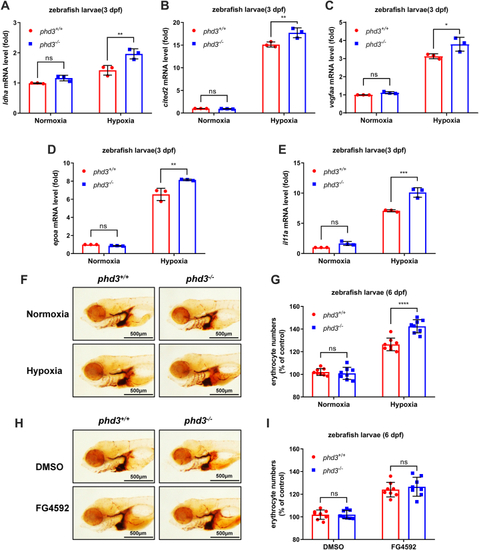
Disruption of phd3 in zebrafish enhances the expression of hypoxia-responsive genes and increase the number of erythrocytes in response to hypoxia.A–E, qPCR analysis of ldha (A), cited2 (B), vegfaa (C), epoa (D), and il11a (E) mRNA levels in phd3-null zebrafish larvae and their wildtype siblings (phd3−/− or phd3+/+) (3 dpf) under normoxia (21% O2) or hypoxia (2% O2) for 5 h. F and G, O-dianisidine staining of erythrocytes in phd3-null zebrafish larvae and their wildtype siblings (phd3−/− or phd3+/+) (6 dpf) under normoxia (21% O2) or hypoxia (10% O2) for 12 h. The quantitation of erythrocytes in (F) was determined by normalizing the intensities of O-dianisidine stained cells. H and I, O-dianisidine staining of erythrocytes in phd3-null zebrafish larvae and their wildtype siblings (phd3−/− or phd3+/+) (6 dpf) treated with FG4592 (20 μM) or DMSO as control for 12 h. The quantitation of erythrocytes in (H) was determined by normalizing the intensities of O-dianisidine stained cells. ns, not significant; ∗p < 0.05, ∗∗p < 0.01, ∗∗∗p < 0.001, ∗∗∗∗p < 0.0001, using unpaired Student's t test; data are representative of three independent experiments (mean ± SD of three technical replicates).
|